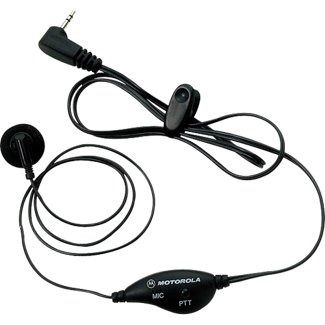We all use our smartphones differently. Some people rely on them for web browsing and apps, some for texting, and many of us still resort to making calls, you know, when we have to. Even within those categories, several patterns emerge and certain habits and practices have been developed. Many of us have long since abandoned using wired headsets for calling, but a lot of people still prefer them to keeping Bluetooth headsets charged or holding a 5-inch phone against an ear. Unfortunately, these simple wired accessories can also be plagued by bugs like anything else, and both the Nexus 4 and 5 seem to suffer from a pretty big one. It turns out that the recording level for these inline microphones can be painfully low, making conversations difficult, if not impossible.
Symptoms
There aren’t a lot of variables here, just one clear and specific problem: the input gain on in-line microphones is incredibly low on the Nexus 5 and Nexus 4. People on the other end of a conversation describe the person talking as sounding like they are on the other side of the room. Sometimes, the problem can be so bad that the speaker can't even be heard.
It’s worth noting, this bug isn’t limited to making calls. Any application that takes sound from the inline mic is handicapped by this issue. Obviously, this can impede things like Google Now, voice dictation, and many other common activities.
Causes
At its core, the issue appears to originate in the Automatic Gain Control (AGC), a piece of software responsible for adjusting the input gain based on the quality of a signal. For example, if the line quality were very low and the incoming signal too quiet, the gain would be boosted to make it audible. It seems that the AGC is becoming confused and reversing the effect. A few users discovered the likely culprit after using apps with the ability to disable the AGC while making recordings.
Another contributing factor - or possibly the whole problem - may trace to something as simple as inconsistent wiring of the headset jacks. Believe it or not, there are two slightly different standards for those tiny little plugs: OMTP and CTIA. An original standard was created years ago by the Open Mobile Terminal Platform (OMTP) in an effort to unify accessories for use across handsets from all OEMs. This is the standard originally created and used by companies like LG, Samsung, Blackberry, and virtually everybody else. The newer, but nearly identical wiring arrangement appears to have been created by Apple and supported as a standard by CTIA. Yes, this is one time we should all get angry, because this is really stupid...
Many headset manufacturers initially began producing iPhone-compatible variants alongside the originals. However, as those headsets became dominant, many of the OEMs have switched their hardware to CTIA to conform to market demands. The Nexus 4 and Nexus 5, still uses the OMTP pin out pattern, as do all phones manufactured by LG and a few other OEMs. In most cases, this doesn’t matter because software drivers can be written to detect and automatically adjust to the type of jack, but it’s possible this functionality was forgotten or malfunctioning in the code for the two Nexus handsets. If handled improperly, this difference could explain the low input gain. Take note, this is speculation and may have nothing to do with the problem.
Workarounds
The options for workarounds are a bit limited, but there are a few. The best, but most expensive option is to replace your current wired headset with one known to be working, or move over to Bluetooth headsets which don’t suffer from this issue. The wired headsets that have been reported by others to work are the Yurbuds Inspire Talk Sport and many of the V-Moda models. If you happen to live in a country where LG also distributed the mic-equipped earbuds, they also seem to work quite well.
For a cheaper alternative, some people have tried OMTP-to-CTIA adapters. Oddly, the results have been mixed. In some cases, it seems to completely resolve the issue, but others report it can make things worse. These adapters are very cheap, but given the hit-and-miss nature, they might not be worth the trouble.
If your existing headset is equipped with a button for hanging up on a call or otherwise controlling audio playback, there is a creative hack that might work for some people. By holding down the button when first plugging in the jack, a connection is shorted and the phone is tricked into believing the headset lacks a microphone. When making a call, this results in pushing audio through the earbuds, but enables the speakerphone on the handset. This isn't suitable for everybody, but it might be a good workaround until a proper fix comes.
Wrap-up
In a dash of perfect timing, an announcement of a fix for the Nexus 5 was posted in the Google Product Forums at exactly the same time I was writing this article. Unfortunately, the statement isn’t clear if there will also be a fix for the Nexus 4, but given the obvious similarity, there’s no good reason to overlook it. Even if this is a driver issue, as it likely is, the same fix should work across both handsets.
A release date for the patch hasn’t been divulged, but it’s likely to come with the next OTA. Since updates typically flow pretty steadily in the first couple of months after a major release, this issue should be resolved fairly soon.

